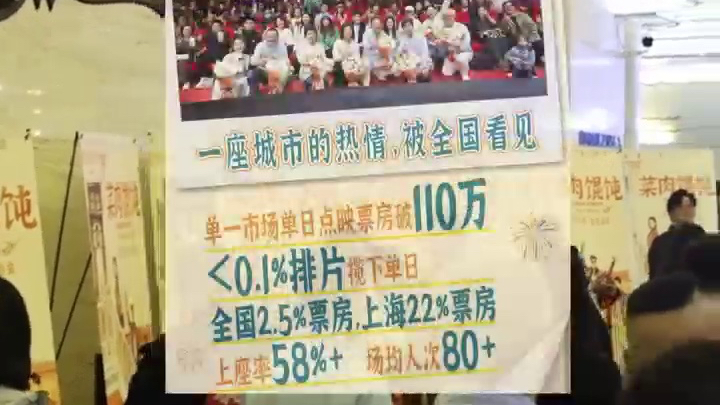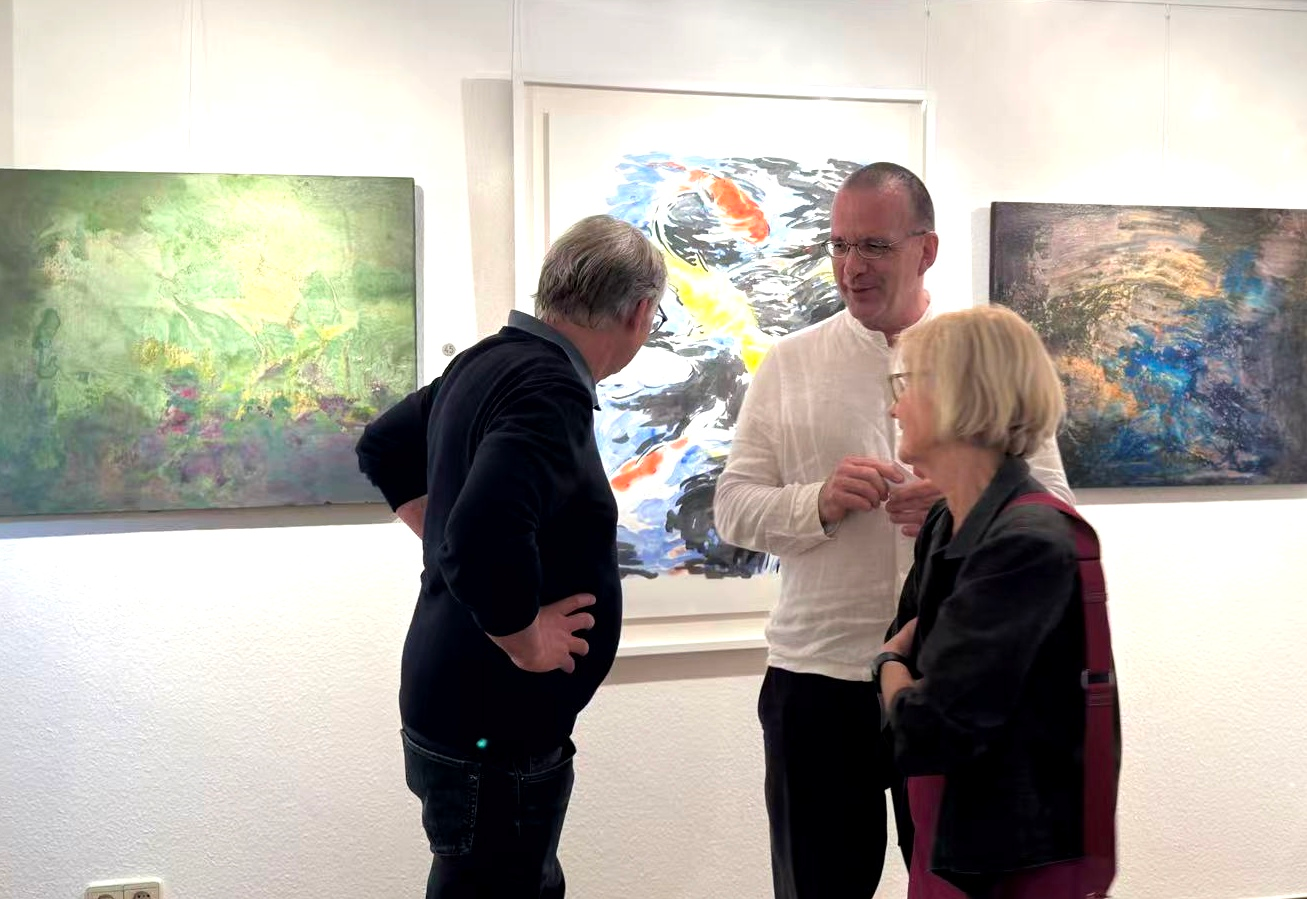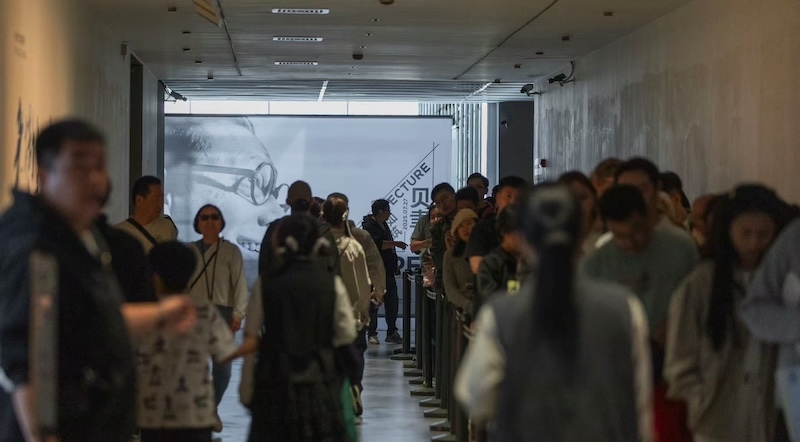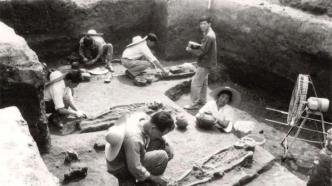
In Songze Village, Zhaoxiang Town, Qingpu District, Shanghai, nestled among farmland and rivers, there stands a low-key museum that tells the origins of Shanghai's history - the Shanghai Songze Heritage Museum. The museum building is small and scattered in heights like the silhouette of an ancient village, perfectly blending into the cultural and natural features of the surrounding Jiangnan water towns.
As the first prehistoric site museum in Shanghai established on the original site, the Songze Site Museum will celebrate its tenth anniversary on May 18 this year. According to statistics from the museum, the Songze Museum has received more than 700,000 visitors since its opening, held more than 500 social education activities of various types, and benefited more than 200,000 visitors. The Songze Ruins Museum has become a window to display the Songze Ruins, a window for the public to understand the history of Shanghai 6,000 years ago, and a place to inherit the ancient and modern cultural heritage of Shanghai.
On the occasion of this year's International Museum Day, "The Paper Ancient Art" went to Qingpu and got close to this small but beautiful heritage museum.
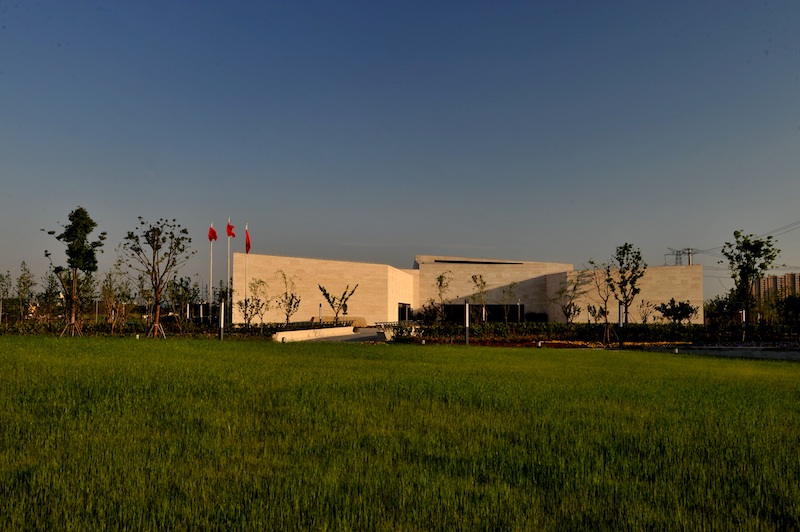
Exterior view of Shanghai Songze Heritage Museum
Searching for Yuan Song’s tomb in the Eastern Jin Dynasty and unexpectedly discovering the Songze ruins
The Shanghai Songze Heritage Museum is located along the Hu-Qingping Highway in Songze Village, Zhaoxiang Town, Qingpu District, Shanghai. It looks low-key and friendly amid the farmland, green spaces and rivers. The exterior layout of the building is scattered at different heights, like a miniature of an ancient village.
In the early years of the archaeological community, there was a saying that "Shanghai has no ancient records to examine". The older generation of archaeological experts all say how to conduct archeology on asphalt roads. In 1957, the discovery of the Songze site ended this situation, and the archaeological excavation process of the Songze site began for more than half a century.
The first archaeologists to conduct archaeological surveys in Qingpu County (now Qingpu District) were Mr. Huang Xuanpei, former deputy director of the Shanghai Cultural Administration Commission and Shanghai Museum, and Mr. Sun Weichang, former deputy director of the Archeology Department of the Shanghai Museum. According to Mr. Huang Xuanpei and Mr. Sun Weichang's dictation at that time, they mainly went to Fuquan Mountain and Songze in Qingpu. They went to Songze because it was recorded in the county annals that there was Yuan Song's tomb on the rockery pier in Songze Village.
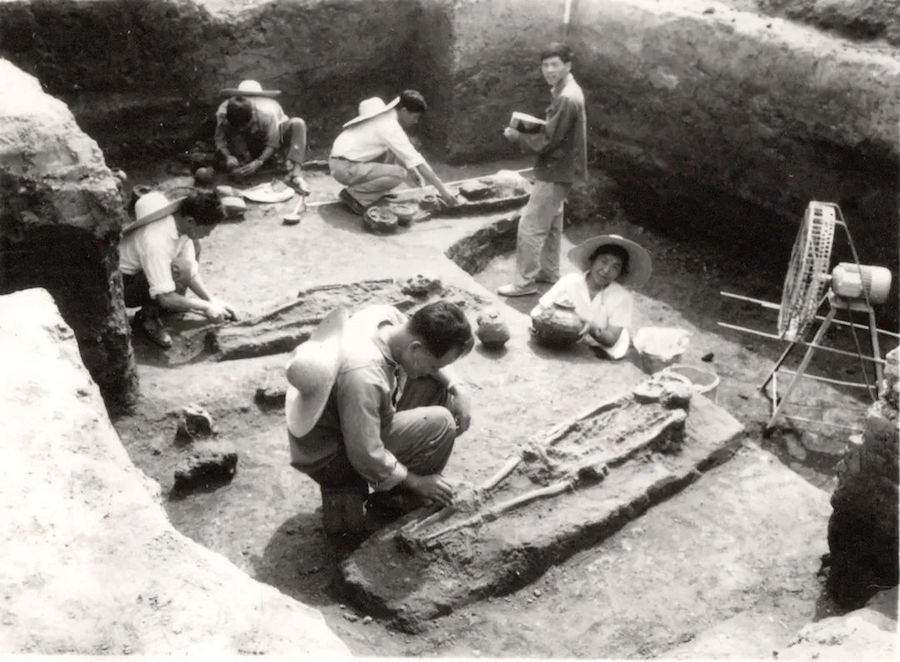
Photos of the tomb cleaning work at the Songze site in the 1960s
"What we are interested in is whether this is a tomb from the Jin Dynasty. When we went to investigate, we still said that there was no ancient history in Shanghai. It is amazing that there are relics from before 1,600 years ago." Mr. Huang Xuanpei said. "Comrade Huang Xuanpei and I couldn't wait to carry out some investigations in Qingpu, and finally discovered the ancient cultural site of Songze." Mr. Sun Weichang said.
In 1961 and 1974, Shanghai archaeologists led by Mr. Huang Xuanpei conducted planned excavations on the site twice. Archaeological excavations showed that the Songze site was a site from the Neolithic Age to the early Warring States Period, and Ma The remains of Jia Bang Culture and the remains of Songze Culture (later named).
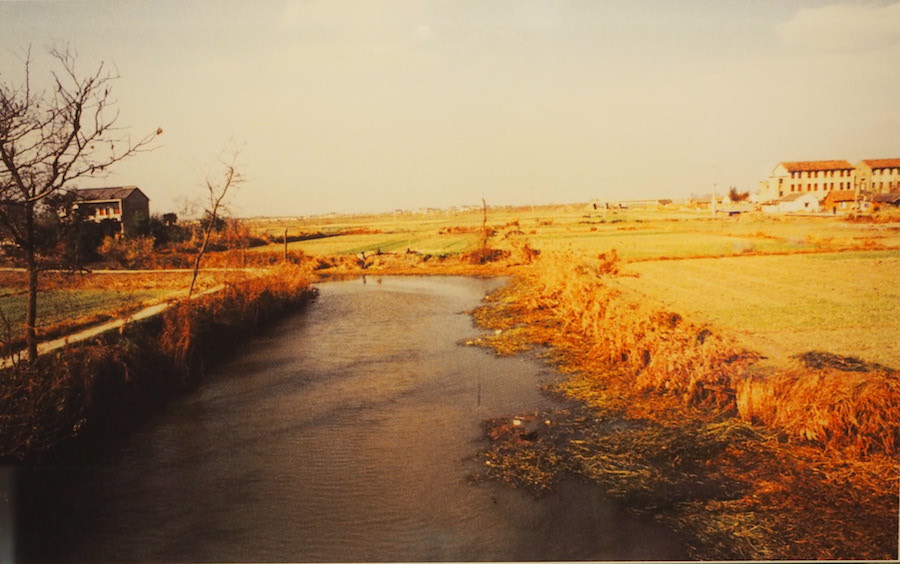
Panoramic view of Songze ruins in the 1980s
Based on the results of these archaeological work, in 1987, the Shanghai Municipal Cultural Relics Management Committee edited and published the book "Songze—Report on the Excavation of Neolithic Sites". This was the first official archaeological monograph in Shanghai. The title of the book was coined by the then Inscribed by Jiang Zemin, Secretary of the Shanghai Municipal Party Committee. It was also on the basis of these two excavations that the naming of "Songze Culture" was widely recognized, becoming the first archaeological culture named after a place in Shanghai. Afterwards, several generations of Shanghai archaeological workers took over, making the cultural connotation of this ancient cultural site in Songze increasingly rich.
Zhang Minghua, a researcher at the Shanghai History Museum who has participated in the archaeological excavation of the Songze site, told The Paper that from bottom to top, the Songze site contains more than 6,000 years of Majiabang Culture, 5,000 to 6,000 years of Songze Culture, and more than 4,000 years of The Liangzhu Culture and scattered relics of the Western Zhou Dynasty and Spring and Autumn Period; in the center is a large cemetery with more than 100 ancient tombs dating from 5000 to 6000 years. The first person, the first house, the first pot of meat (more than 6,000 years ago), and the stone processing plant (more than 5,000 years ago) were discovered in Shanghai... What is particularly gratifying is that the earliest water well in China was also discovered here. The earliest cultivated rice, indica and stem, the earliest domestic pig, the earliest jade...

Domestic pig ceramic sculpture
The Songze Site Museum was built directly on the original site of the excavated and backfilled site. It is located in the core area of the Songze Site. The tombs of the year, the "No. 1 Person in Shanghai" and the "No. 1 House in Shanghai" were all located in this area. excavated. Compared with the entire Songze ruins protection area of about 150,000 square meters, the Songze ruins museum occupies only one-tenth of its area. The Songze Ruins Museum can be said to be the only place where the public can see and recall the archaeological excavations of Songze.

Aerial photo of the excavation area in 2014
In the past ten years, the excavation, protection and research of the Songze site have continued. According to Huang Xiang, director of the Archaeological Research Department of the Shanghai Museum, the archaeological work at the Songze site has entered the third stage, and the site has been effectively protected, displayed and utilized. "In 2014, the Shanghai Songze Site Museum was officially opened to the public, and the display and utilization of the Songze Site has also entered a new stage; by 2018, we will have basically completed a comprehensive archaeological exploration of the Songze Site; in 2021, the Songze Site will become a museum in Shanghai The only ancient site selected as one of the top 100 archaeological discoveries of the past 100 years.”
Exploration practice from ruins to museums
Songze Village in Qingpu District, where the Songze Site is located, is a typical land of plenty in the south of the Yangtze River, surrounded by rivers and ports and dotted with farmland. This is still reflected in the current ecology surrounding the Songze Site Museum.

Songze Site National Key Cultural Relics Protection Unit Stone Stele
Walking past the stone monument of the "National Key Cultural Relics Protection Unit" of the Songze Site (in 2013, the Songze Site was announced by the State Council as the seventh batch of national key cultural relics protection units), standing on the stone bridge leading to the site museum, underneath is a east-west The small river in the direction is winding and winding. The river channel is very narrow and has not been repaired. In autumn and winter, you can still see patches of reeds along the river bank extending in a winding way. The scene in front of us arouses people's imagination. The ancestors of Shanghai once farmed, fished and hunted on this land. 6,000 years of vicissitudes of life seem to have happened in a blink of an eye.
The Shanghai Songze Heritage Museum was established in 2003 and is a major cultural facility construction project in Shanghai’s “Twelfth Five-Year Plan”. After more than 10 years of preparation and construction, it was officially opened to the outside world on May 18, 2014. As a branch of the Shanghai History Museum (Shanghai Revolution History Museum), it is positioned as "site protection and management, unearthed cultural relic collection, academic research, local history education and cultural leisure tourism", and is committed to inheriting and protecting Shanghai's history.

Exterior view of Shanghai Songze Heritage Museum
20 years ago, building a museum directly on the original site was a relatively advanced concept. It also faced some controversy at the beginning of its construction. Strictly speaking, it is not a "ruin museum" in the traditional sense because it does not display ruins. ontology.
According to Zhang Lan, the former director of the Shanghai History Museum, when the Songze Heritage Museum was first built, there were still only a few heritage museums nationwide. The practice of Chinese heritage museums began with the establishment of the Chinese Ape Man Exhibition Hall in 1953. Representative examples include the Banpo Heritage Museum established in 1958 and the Qin Shihuang Terracotta Warriors and Horses Museum established in 1975. At the beginning of the new century, the ruins museums include the Yin Xu Museum established in 2005; the Hanyang Tomb Museum established in 2006; and the Jinsha Heritage Museum established in 2007. “Shanghai is one of the pioneers and represents the innovative spirit of Shanghai’s archaeological and cultural museum community that dares to be the first.”
Zhang Lan said that the ruins museum can coordinate the relationship between archaeological research, ruins protection, social display, economic development, improvement of residents' lives and many other aspects on the premise of scientific protection of archaeological ruins. It is the most suitable means for ruins protection and meeting social and cultural needs. . It is recognized by society at the academic level, but there are always different views on the balance between culture and economy.
A window for the audience to understand the history of Shanghai 6,000 years ago
The appearance of the Songze Heritage Museum is to create a microcosm of an ancient village, integrating small bridges, flowing water, villages and courtyards into the architecture. At the entrance of the exhibition hall, there is a replica of the stratigraphic section from the excavation of the site. A shadowy shadow appears on the section, which is an imitation of the engraved symbols on some pottery and jade artifacts found in the archaeological remains. There are also some pottery and shell remains.
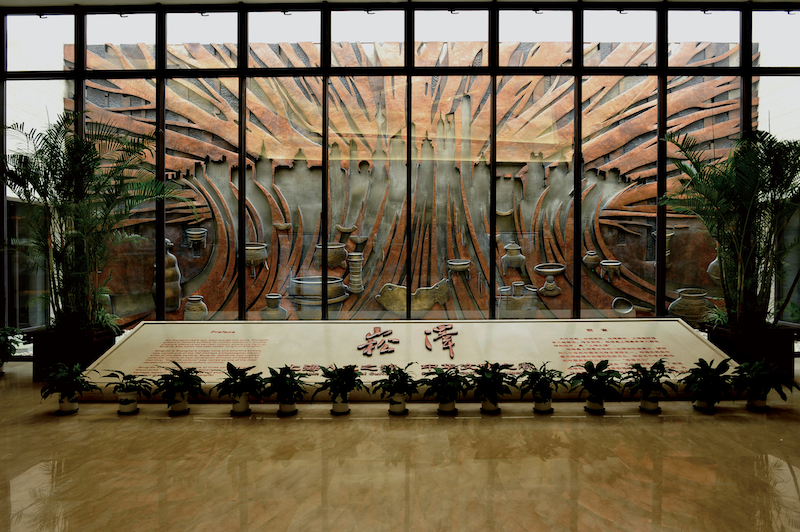
The basic display in the museum simulates the environment of the ruins. One part displays the actual cultural relics unearthed from the Songze ruins through showcases; the other part simulates some restoration scenes of the archaeological ruins. For example, the exhibition hall restores the tomb scene of the "first man in Shanghai" who was discovered. , restored the "No. 1 Well in Shanghai" and "No. 1 House in Shanghai" discovered by archaeologists, and you can see the appearance of the "No. 1 Person in Shanghai" restored based on the skulls discovered through archaeology and combined with imaging technology.
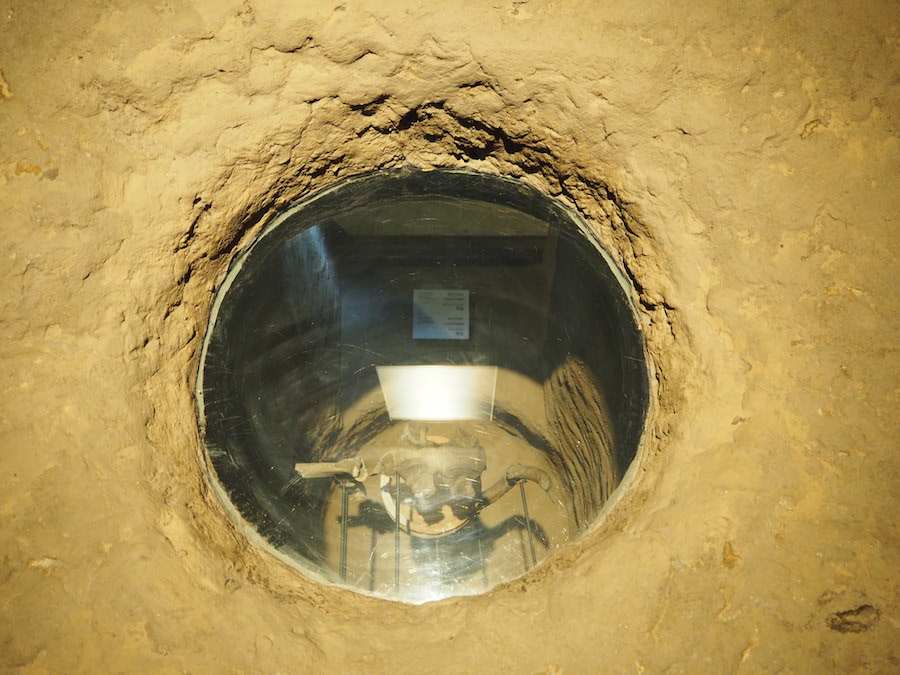
The restored No. 1 Well in Shanghai in the exhibition hall
Shanghai Songze Heritage Museum has the characteristics of scientific, on-site and experiential nature. Zhang Lan told The Paper, “The basic display of the museum is based on the display and narration of previous archaeological discoveries and research results from the 1960s to the beginning of this century. It can be said to be a summary of the past, and the museum’s completion leaves behind The surrounding protection areas make people look forward to what new horizons Songze Archeology will open up for us next time.” “It is precisely because of this positioning and its own characteristics that Shanghai Songze Site Museum is dedicated to displaying and spreading Songze. The best place for archaeological excavations at the Ze site.”
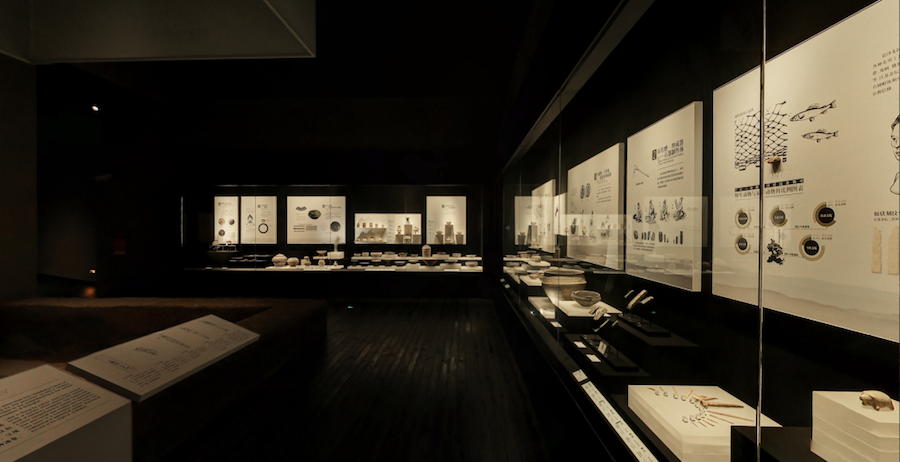
Interior of the exhibition hall of Shanghai Songze Heritage Museum
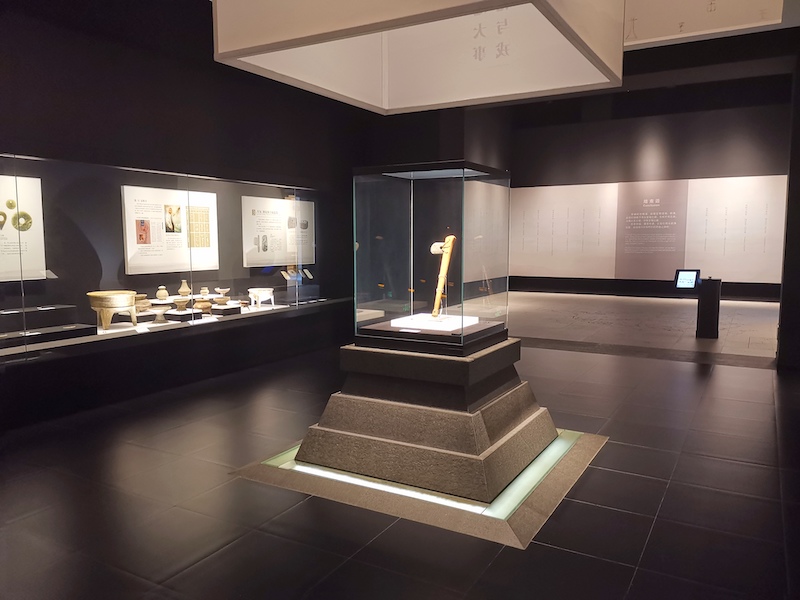
Shanghai Songze Site Museum Exhibition Hall
"The Songze Ruins Museum is a window to the Songze Ruins. It is a platform for effective dissemination, accurate display, and activation of the Songze Ruins. Together, it constitutes the carrier of Shanghai's six thousand years of history." Huang Xiang said, Songze Ruins is a prehistoric site. Archaeological sites with culture as the main body are not very ornamental and difficult to understand and disseminate. There is a great need for site museums to help citizens understand and understand the sites through exhibitions and activities. At the same time, as the archaeological work progresses, it can provide new content for the exhibition of the ruins museum.
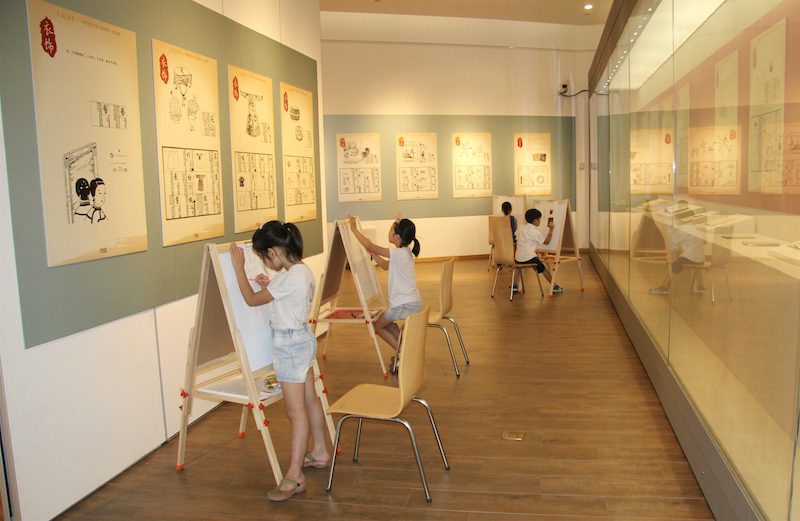
public education activities

public education activities
According to statistics from the museum, the Songze Museum has received more than 700,000 visitors and about 2,000 group visitors since its opening. It has held 500 social education activities including traditional holidays, joint construction activities, special parent-child activities, and student social practice activities. The remaining performances benefited more than 200,000 viewers. In addition to the basic exhibitions showing "Songze Site", Songze society, and Songze heritage, the museum has also launched temporary exhibitions with rich and diverse content since its opening, including red-themed exhibitions, traditional culture exhibitions, and archaeological-themed exhibitions.
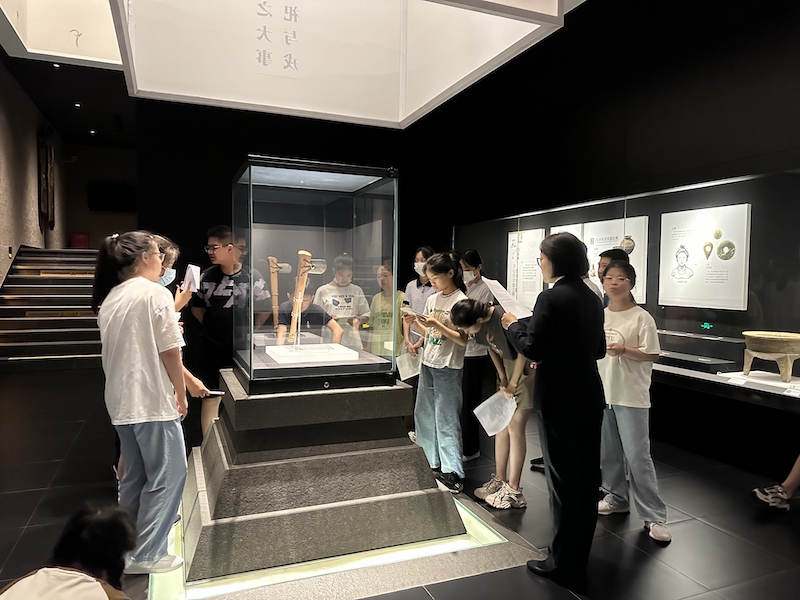
Training for small commentators of public education activities
The tenth anniversary of the opening of Shanghai Songze Heritage Museum is of great significance. Zhang Minghua said, “It allows the audience to step on the land where the ancestors of Shanghai cultivated, fished and hunted five or six thousand years ago, and travel back to ancient times facing the stone tools, jades, and pottery made and used by the ancestors in the display cabinets... It allows the audience to intuitively discover that Shanghai is not just a modern young city with many high-rise buildings, but also a place with a rich history and culture of six thousand years. "
The next decade…
Songze ruins, Fuquanshan ruins, Qinglong Town ruins... Through the efforts of several generations of archaeologists in Shanghai, more and more cultural ruins have been revealed. Qingpu, with its long history and profound cultural heritage, has become a veritable "source of Shanghai".
"Qingpu is located in the west of Shanghai. It formed land earlier than other Shanghai areas. Its good living and development environment is more suitable for early human settlements. It is backed by the economically developed Taihu Lake area, where rivers and seas meet, and convenient water transportation is also Later, it provided strong conditions for the rise and prosperity of Qinglong Town, a commercial town," said Wang Hui, former director of Qingpu Museum.

Shanghai Songze Site Museum Exhibition Hall
The completion of the Songze Heritage Museum has improved and optimized the spatial and functional layout of Shanghai's regional cultural venues to a certain extent. Some experts mentioned that the current public enthusiasm for cultural tourism and cultural museums is unprecedentedly high. As long as cultural venues can provide sufficiently excellent and attractive cultural products, audiences will be willing to go there, no matter how far away they are.
What expectations do people in the industry have for the Songze Heritage Museum, and how can they better welcome the next decade? Experts have put forward many suggestions.
Zhang Lan said that there are many important ancient cultural sites and cultural units in Shanghai scattered around the Songze Site Museum, which are only five or six kilometers apart, such as the Fuquanshan Site in Chonggu, the Longping Temple Site in Baihe, and the Qingpu Museum in the urban area. . "It can organize, plan and implement surrounding public transportation to facilitate people's travel, which is conducive to the integration and dissemination of culture and meets the convenience of the people's enjoyment of public culture."
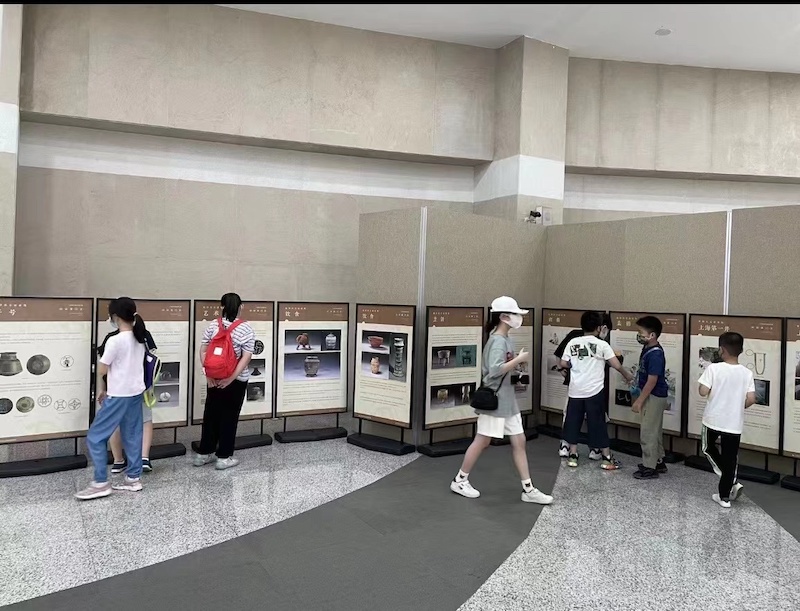
Centenary Exhibition
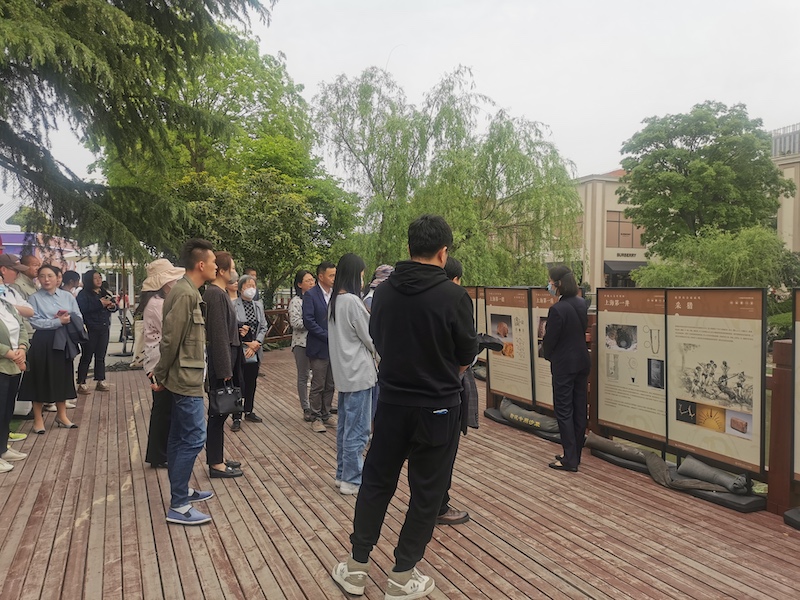
Centenary Exhibition
Some experts also suggested that in the future development of the Songze Site Museum, the advantages of the site museum can be more highlighted. “I hope that the museum will have more cultural relics unearthed from the site and less replicas, so that it can be truly on-site and experiential, allowing the audience to Experience the achievements of archaeology.”
In recent years, Qingpu District has developed rapidly, with many bright spots emerging in both industrial and cultural construction, and its achievements in ecological protection are impressive. Some experts have also suggested that the construction of a heritage park can be realized.
Zhou Qunhua, Secretary of the Party Branch and Director of the Shanghai History Museum, told The Paper that the Shanghai History Museum will give full play to the "one museum and two sites" (namely, the Shanghai History Museum, the Shanghai Songze Site Museum, and the Shanghai Yuan Dynasty Watergate Site Museum). ), provide more vital and innovative cultural products to serve Shanghai citizens and tourists.
